No rush of restaurants switching to new rules allowing six diners per table, service until midnight.
As soon as the Hong Kong government loosened restrictions on restaurants through its coronavirus“vaccine bubble” scheme on April 29, Martin Chan Keung swung into action.
He split the 18 tables at his Fresh Seafood Restaurant in Tsim Sha Tsui into two zones.
Most of his competitors stuck to the old rules, with up to four people per table and dine-in service until 10pm. But in a smaller section of his eatery, Chan tried out the new conditions allowing groups of up to six, with service until midnight.
“At first, we failed to draw any diners. We gave up after three days,” the 48-year-old said.
He eventually figured out a flexible way to match the flow of customers, and business grew by more than 20 per cent.
After grappling successfully with wave after wave of Covid-19 infections since January last year, Hong Kong began its vaccination drive in late February, covering 6.5 million people aged 16 or above, local and expatriate, free of charge.
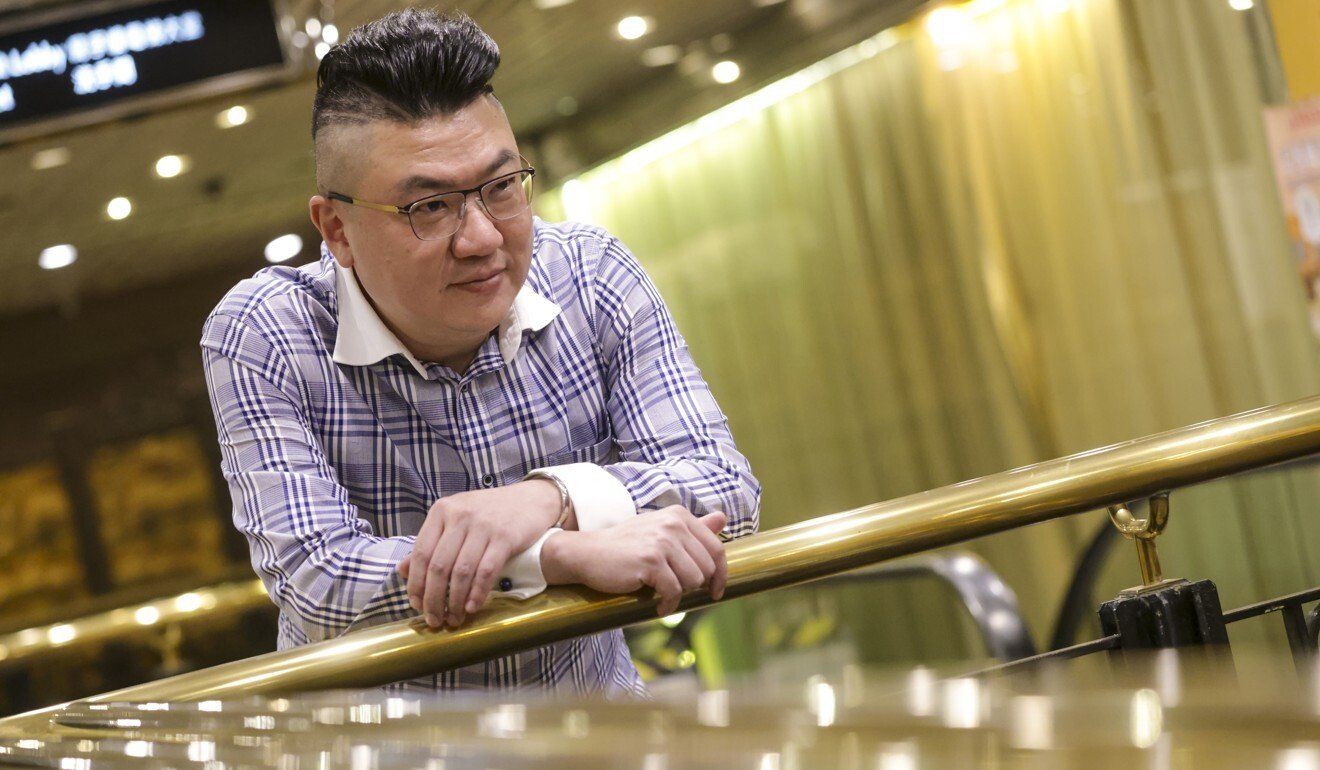 Fresh Seafood Restaurant founder Martin Chan is among those who have
seen business go up after adjusting to new rules allowing him to stay
open until midnight.
Fresh Seafood Restaurant founder Martin Chan is among those who have
seen business go up after adjusting to new rules allowing him to stay
open until midnight.
Last month, authorities eased some pandemic restrictions, introducing the vaccine bubble scheme for restaurants, bars and other operators.
The new rules allow those who have been vaccinated to dine out in groups of six or eight. Businesses with staff that have been vaccinated are allowed to divide their premises into different zones, accept more customers and offer dine-in services until midnight or even 2am.
While these changes are meant to help businesses, they also aim to encourage more city residents to get vaccinated.
Response to the inoculation campaign has been sluggish so far, with only about 1.12 million of the city’s 7.5 million people having taken one dose. A total of 733,196 people, or 9.8 per cent of the population, have received two jabs.
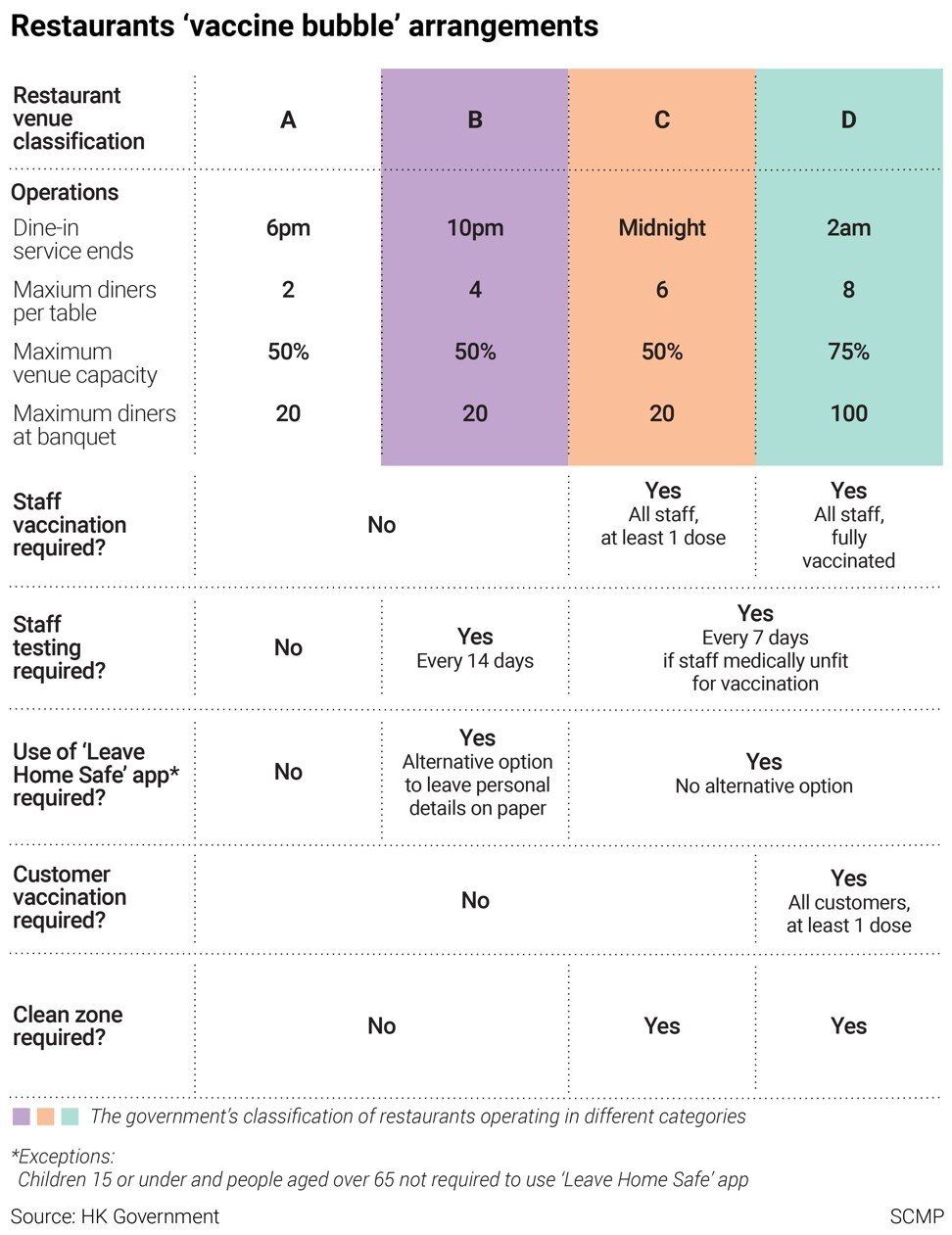
Table for six, section C
For restaurant owners, the vaccine bubble brought four tiers of rules, and introduced the onerous task of checking their customers’ vaccination status.
There had previously been just two categories.
Type A restaurants allow two patrons per table with dine-in service ending at 6pm. It includes no requirements for testing staff for Covid-19 or contact tracing for patrons.
Type B restaurants are allowed to serve up to four people per table until 10pm. Their staff have to be tested fortnightly, and patrons must write down their personal details.
The new type C category allows up to six people per table with dine-in service until midnight, provided staff have received at least one vaccine dose and customers use the government’s “Leave Home Safe” contact-tracing app.
Type D, the final tier, allows up to eight diners per table with service until 2am, provided staff are fully vaccinated and patrons have received at least one jab. Restaurants must use a government scanning app to verify diners’ vaccine status.
Type D establishments may operate at 75 per cent capacity, compared to only half capacity for all others.
The vaccine bubble has also allowed bars and nightclubs to resume business after being shut since late November. They can stay open until 2am, with two people per table, provided all staff and customers have received at least one vaccine dose and patrons use the contact-tracing app.
The scheme also covers other gathering places such as bathhouses, karaoke lounges, wedding venues and church services, requiring all present to have received at least one shot, with guests using the contact-tracing app.
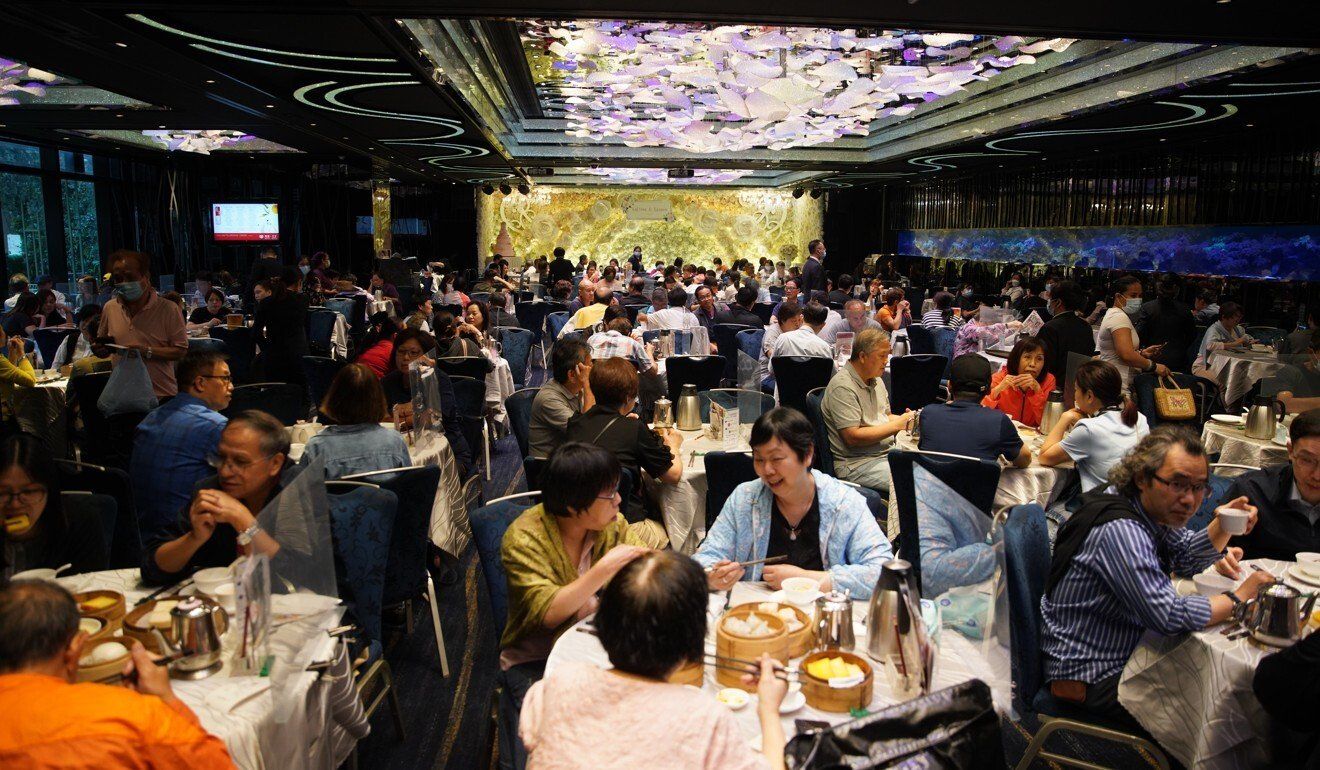 A packed restaurant in Hong Kong’s Kwun Tong neighbourhood arranges tables according to zones under new Covid-19 rules.
A packed restaurant in Hong Kong’s Kwun Tong neighbourhood arranges tables according to zones under new Covid-19 rules.
‘Two more hours do not help’
In the first two weeks since the rules were eased, however, there has been no rush by restaurants to switch to the new C and D options.
As of May 10, government data showed that only 220 out of 16,000 eateries had introduced the new arrangements.
For some, the relaxed rules are out of the question, because their premises are too small or they have too few staff to manage separate zones.
For now, many are simply sticking with the existing B arrangements allowing four per table until 10pm.
“We don’t see the appeal of proceeding to C. For us, serving two more people per table and running for two more hours doesn’t make any difference,” said Ray Chui Man-wai, chairman of Kam Kee Holdings, which runs 36 restaurants and has more than 800 employees.
“Most of our restaurants are small, so it’s difficult for us to divide them into different zones.”
The group is sticking with type B rules despite 80 per cent of its employees having already been vaccinated. The rest are seeking medical advice for health conditions.
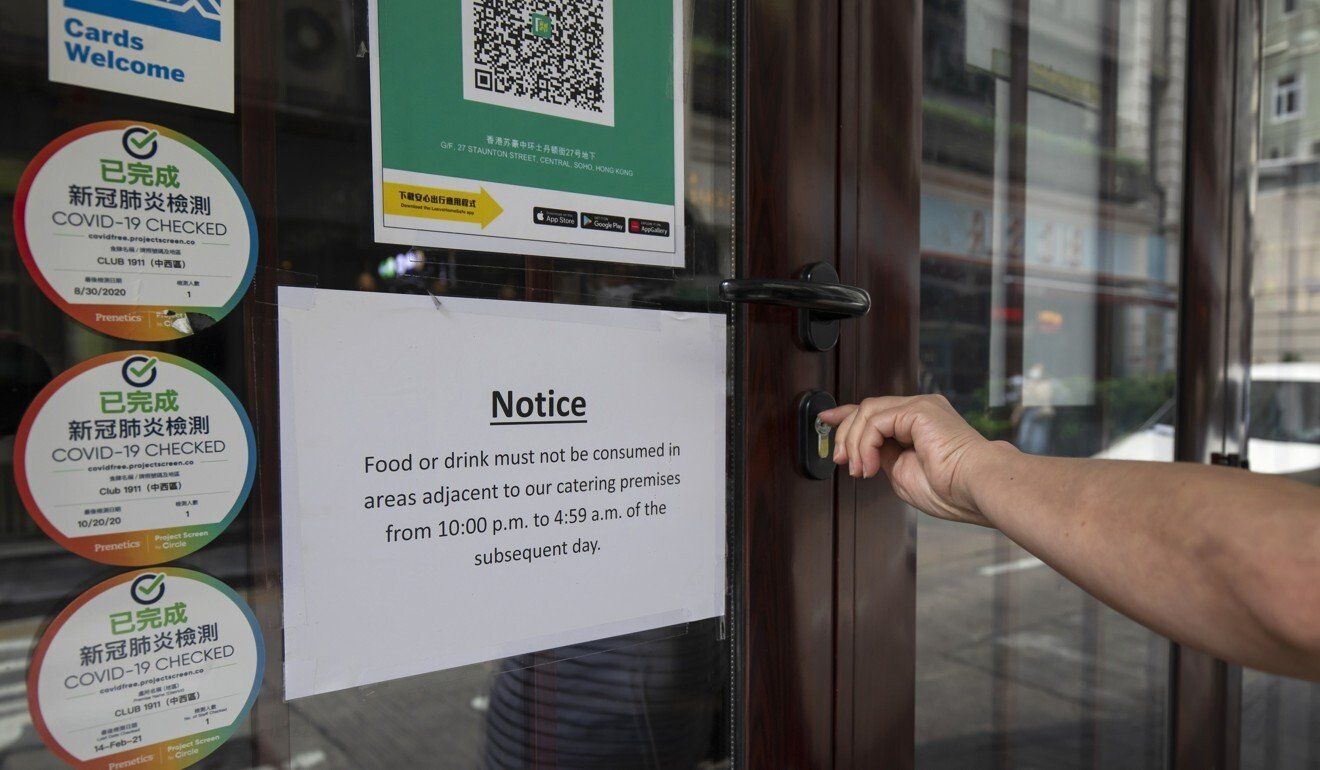 A notice of adjusted opening hours at a bar in Hong Kong’s Soho
nightlife area sits below a QR code for the government’s ‘Leave Home
Safe’ app.
A notice of adjusted opening hours at a bar in Hong Kong’s Soho
nightlife area sits below a QR code for the government’s ‘Leave Home
Safe’ app.
Chui, who is also chairman of the industry body the Institute of Dining Art, estimated that more than 60 per cent of the city’s 200,000 catering sector workers have had their shots.
The Urban Eateries Group, with three restaurants and about 50 staff, is also staying with the B arrangements, although about 70 per cent of its staff have been vaccinated.
While it would like the rest of its workers to get their jabs, director Nigel Farmer said: “Restaurants cannot and should not be put in a position where they have to force staff to be vaccinated to work. It’s ridiculous and unworkable.”
News of the vaccine bubble prompted bartender Ricky Chiu, 52, of Fresh Seafood Restaurant to get vaccinated last month.
“We are like a family here, and I want to be able to help my company to do more business,” he said. “I also hope to protect myself and my family since I work in a high-risk sector and face a lot of diners.”
The U Banquet Group drew flak earlier when it threatened to suspend staff who did not get vaccinated by late April.
Its chairman, Cheung Ka-ho, said the firm offered workers HK$2,000 (US$257) as a reward to get inoculated. So far, about 70 per cent have had their jabs while the rest are seeking exemptions on medical grounds.
“I don’t think they got vaccinated only because of the money,” he said. “All of them did it of their own accord, as they know they have a responsibility to protect their families and diners.”
Nobody was suspended for failing to get vaccinated, and nobody was coerced either, he added.
At the U Banquet Group’s Kwun Tong outlet, which has introduced B and C zones, branch manager Danny Yip said the new rules did not make sense.
The restaurant had only one toilet for patrons from both areas, he said, adding: “I really don’t see the point of this zoning policy.”
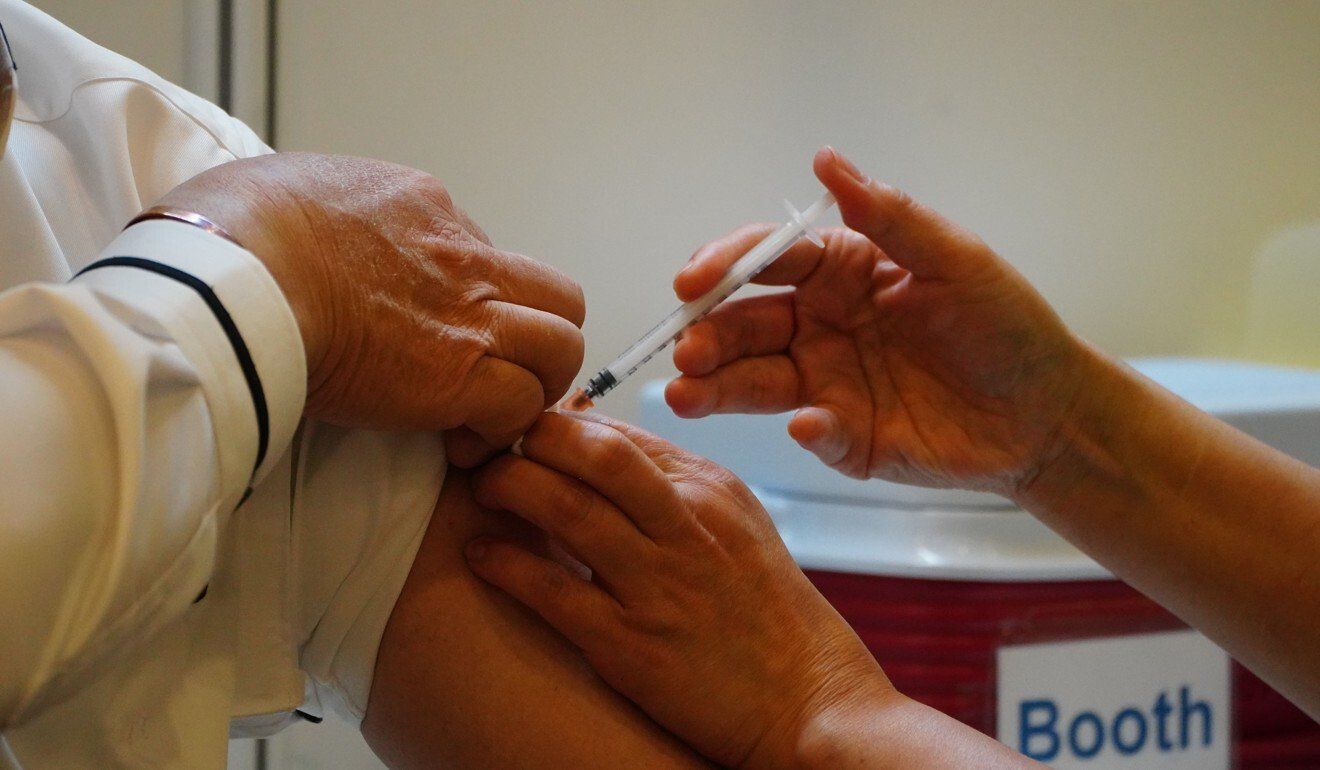 While a majority of Hong Kong restaurant and bar workers are now
vaccinated, a sizeable minority are seeking medical exemptions.
While a majority of Hong Kong restaurant and bar workers are now
vaccinated, a sizeable minority are seeking medical exemptions.
Difficult patrons add to woes
The new rules requiring restaurants to check their patrons’ vaccine status and demanding that customers use the government’s contact-tracing app have been a stumbling block as well.
Ray Chui said one reason he had not switched to type C rules was that half his diners preferred to write down their details instead of using the contact-tracing app.
“We don’t want to turn off our customers. We can’t force them to use the app,” he said.
Urban Eateries Group’s Farmer said only 30 per cent of his patrons used the app, and customers had been turned away for refusing to provide their details.
“There is a high resistance to the app, and many customers make it very difficult for us to get contact details, so we have to refuse access, and in some cases, arguments ensue,” he said.
An industry source said that instead of giving their own names, many just write “Carrie Lam” – the name of the city’s chief executive – or scribble illegibly before dropping their details in the box provided.
With all seven of its staff members vaccinated, The Italian Club restaurant has switched to type C, with tables of six and service until midnight. CEO Stefano Balsamo said in the past, there were heated arguments when some patrons wanted to stay beyond the 10pm cut-off.
“We also had a problem with a small group that didn’t want to use the app,” he said. “We told them we were following the rules seriously and had to take them out of the restaurant.”
He added he hoped the new arrangement would allow the restaurant to attract the late-night dining crowd and larger groups.
“I hope they can stay longer, enjoy their time, and maybe also spend a little bit more,” he said.
One restaurant patron refusing to use the contact-tracing app is fashion sales worker Vincent Wong, 27, who fears the government will track his movements, a claim officials have denied.
“I don’t trust them even if they say the records will be deleted every 30 days or so,” he said.
But electrical engineer Minnie Chan, 53, has no such qualms. The app is a handy record of where she had been, she said, adding: “I am absent-minded.”
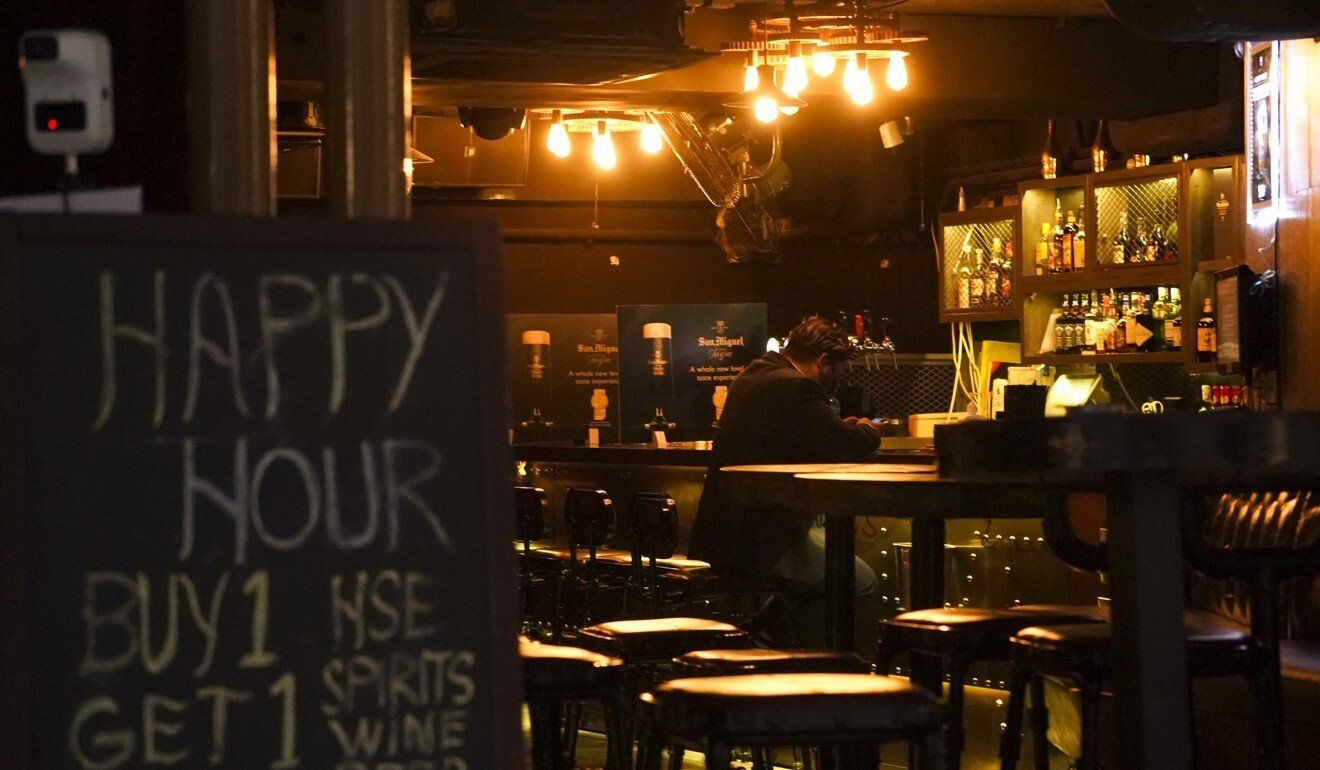 A lone customer sits inside a Hong Kong bar on the first day of the city’s ‘vaccine bubble’ loosening of regulations.
A lone customer sits inside a Hong Kong bar on the first day of the city’s ‘vaccine bubble’ loosening of regulations.
Bar stools sitting empty
Bar owners who seized on the vaccine bubble scheme to reopen after being shut for five months quickly realised that most of their patrons may not have been vaccinated yet.
Wing Chin Chun-wing, president of the Hong Kong Bar & Club Association, estimated that about 70 per cent of workers in the sector have had their shots, but the problem is the low vaccination rate among customers.
Roden Wong Chu-yin, owner of two music nightclubs in Central that welcomed back patrons on April 30, said: “The reopening week’s business was bad, because very few of our regular customers have had their first dose.”
Wilson Lee, who owns 10 bars in the Prince Edward area and employs more than 30 staff, said he reopened as soon as the bubble took effect, on April 29, but customers had yet to show up.
“We have only a handful of guests every night,” he said. The main problem, he added, was that the people vaccinated so far, such as the elderly, were not bar-goers.
All his employees have been vaccinated except for those seeking exemptions on medical grounds.
“We’ve used every means possible to attract patrons, including giving cash vouchers, but to no avail,” said Lee, who revealed that his bars lost HK$3 million over the past year.
He urged the government to let bars be subject to the same rules as restaurants.
Ben Leung Lap-yan, charter president of the Licensed Bar and Club Association of Hong Kong, said many pubs saw “zero business” on quiet nights and questioned why bars and restaurants were treated differently.
“The risks are the same. Why can’t bars have the same rules as restaurants?” he asked.
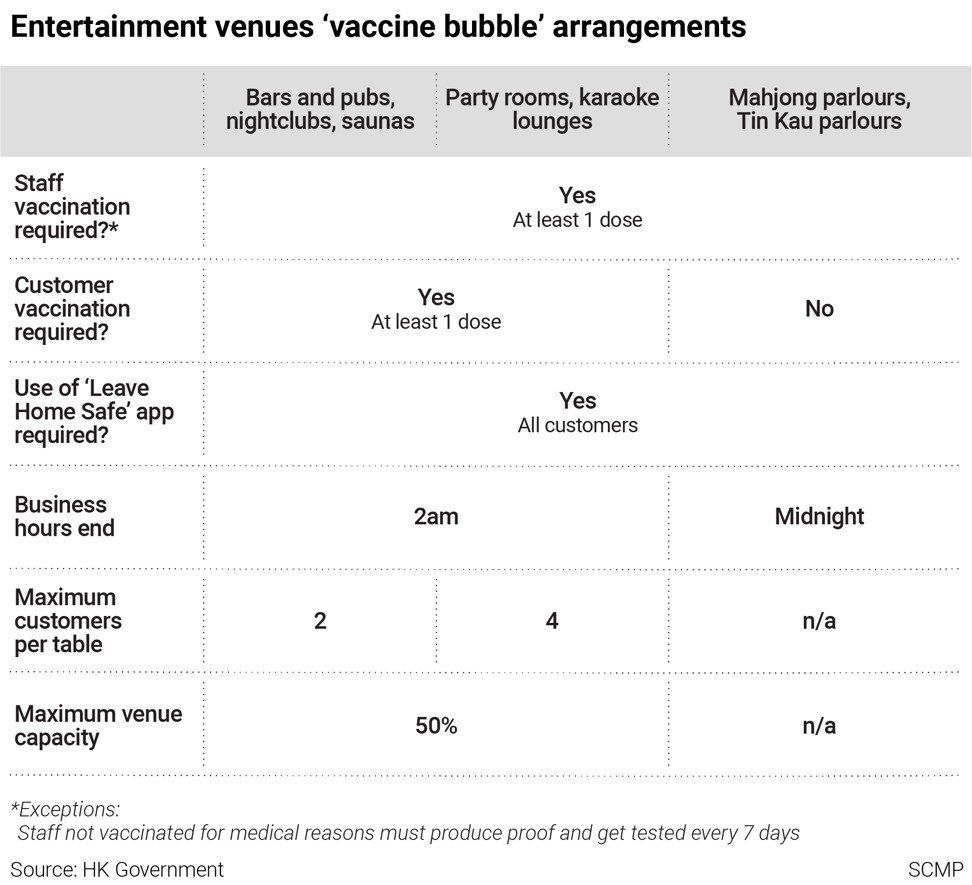
‘No mood to eat out and drink’
Infectious disease specialist Dr Joseph Tsang Kay-yan said it was too early to assess the new vaccine bubble’s effectiveness.
Noting the lukewarm response from businesses and their customers so far, he wondered whether it might be a reflection of weak consumer sentiment caused by the economic meltdown, rather than the low vaccination rate or reluctance to use the contact-tracing app.
“Hongkongers are facing problems of unemployment and the pandemic, many are not in a good mood and not interested in going to bars or gathering in large groups in a restaurant,” he said.
While many working in high-risk sectors could be expected to get their jabs to avoid the bother of regular Covid-19 tests, he said, few Hongkongers would get vaccinated just to be able to go to bars and other entertainment venues.
He said he believed the government would be open to relaxing the vaccine bubble rules further if the pandemic showed signs of being under control, such as recording zero local cases for 28 days.
“The government should reflect on the lessons from implementing the vaccine bubble and whether they are satisfied with the level of success so far,” he said.
Executive councillor and lawmaker Tommy Cheung Yu-yan, who represents the catering sector, conceded that few restaurants had been able to take advantage of the new arrangements so far.
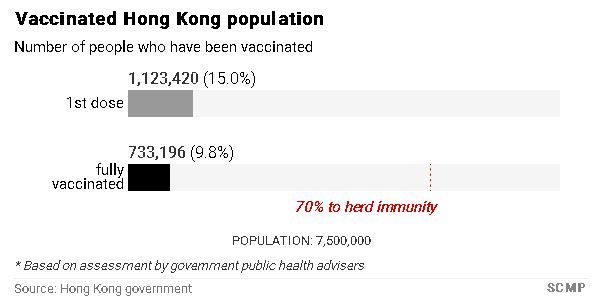
But he insisted the bubble benefited industry and provided a good incentive for Hongkongers to get their jabs.
“If restaurants can operate for two more hours, they can rake in an extra 10 or 15 per cent more business. That is quite something,” he said.
He pledged to urge the government to relax some of the existing restrictions on bars, including allowing them to serve four per table and bring back live music performances.
Legislator Yiu Si-wing, representing the tourism sector, said the vaccine bubble could help introduce smart, safe practices before the easing of international travel and return of visitors.
Before that could happen, he said, Hong Kong needed to implement reliable travel bubbles with different destinations so people could feel safe visiting the city.
“The prerequisite is to boost our inoculation rate to achieve herd immunity.”















